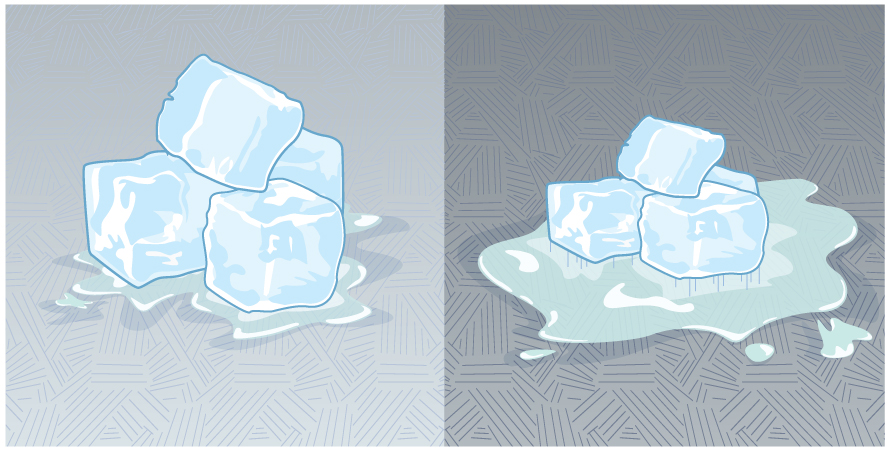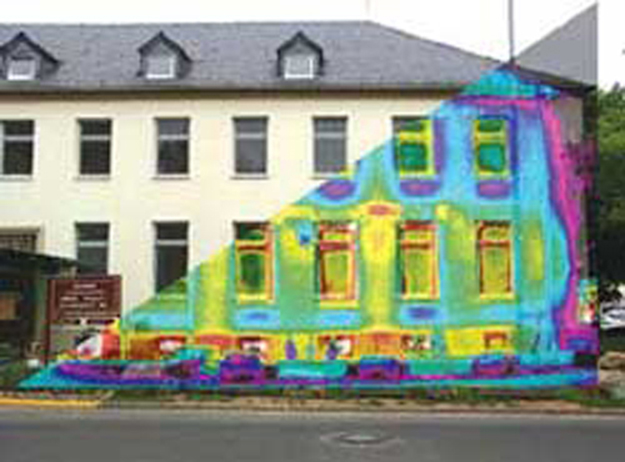| << Chapter < Page | Chapter >> Page > |

Gray objects have a uniform ability to absorb all parts of the electromagnetic spectrum. Colored objects behave in similar but more complex ways, which gives them a particular color in the visible range and may make them special in other ranges of the nonvisible spectrum. Take, for example, the strong absorption of infrared radiation by the skin, which allows us to be very sensitive to it.

The rate of heat transfer by emitted radiation is determined by the Stefan-Boltzmann law of radiation :
where is the Stefan-Boltzmann constant, is the surface area of the object, and is its absolute temperature in kelvin. The symbol stands for the emissivity of the object, which is a measure of how well it radiates. An ideal jet-black (or black body) radiator has , whereas a perfect reflector has . Real objects fall between these two values. Take, for example, tungsten light bulb filaments which have an of about , and carbon black (a material used in printer toner), which has the (greatest known) emissivity of about .
The radiation rate is directly proportional to the fourth power of the absolute temperature—a remarkably strong temperature dependence. Furthermore, the radiated heat is proportional to the surface area of the object. If you knock apart the coals of a fire, there is a noticeable increase in radiation due to an increase in radiating surface area.

Skin is a remarkably good absorber and emitter of infrared radiation, having an emissivity of 0.97 in the infrared spectrum. Thus, we are all nearly (jet) black in the infrared, in spite of the obvious variations in skin color. This high infrared emissivity is why we can so easily feel radiation on our skin. It is also the basis for the use of night scopes used by law enforcement and the military to detect human beings. Even small temperature variations can be detected because of the dependence. Images, called thermographs , can be used medically to detect regions of abnormally high temperature in the body, perhaps indicative of disease. Similar techniques can be used to detect heat leaks in homes [link] , optimize performance of blast furnaces, improve comfort levels in work environments, and even remotely map the Earth’s temperature profile.

Notification Switch
Would you like to follow the 'College physics (engineering physics 2, tuas)' conversation and receive update notifications?